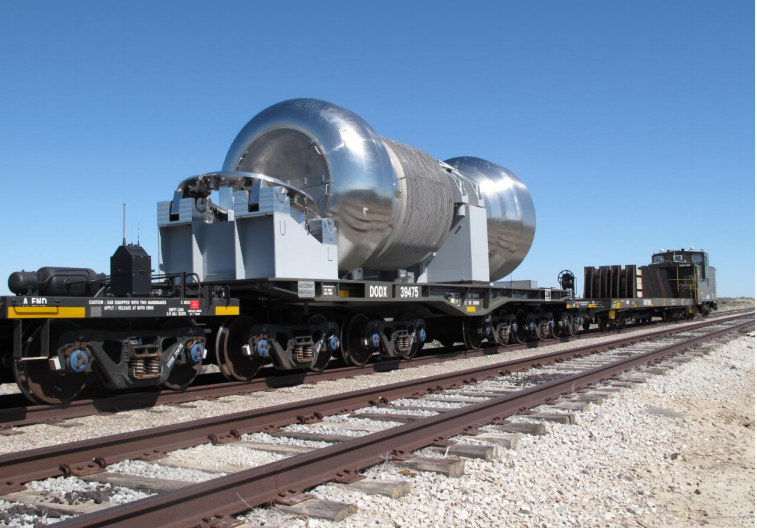An AAR representative confirmed for Trains News Wire that ECP brakes are required as part of the interchange standard S-2043 for multiple-truck flat cars designed to haul 100- to 400-ton casks of spent nuclear fuel. That fuel often comes from nuclear power plants and U.S. Navy submarines and aircraft carriers.
The information surfaced during a Department of Energy panel discussion on Monday at the Transportation Research Board in Washington. The panel consisted of managers and leading researchers from the energy department who are charged with designing nuclear waste freight cars and the transportation logistics necessary to eventually move all nuclear waste to fewer permanent storage sites from many temporary ones located throughout the U.S. They say that rail is their preferred shipment method and one presentation referred to the brake technology as “state-of-the-art.”
The Federal Railroad Administration announced a rule in May 2015 that would require all tank cars in high-hazard flammable trains, which include unit ethanol and crude oil trains, to have functioning ECP brakes installed by 2021. The methods FRA used to justify the rule have been criticized by the AAR and the Government Accountability Office, which said the sister federal agency’s data was not “transparent.”
AAR President and CEO Ed Hamberger disparaged ECP brakes when the rule was first introduced.
“… ECP brakes do not significantly improve safety and are unreliable. No justified safety case for ECP brakes has ever been made,” Hamberger wrote in a statement that is available online.
Ed Greenberg, the AAR representative, says that AAR stands by its assessment of ECP brakes despite the earlier nuclear freight car standard. Greenberg also says that any future revision to the car standard would include a discussion on removing ECP brakes from the cars’ specifications.
“When the spent nuclear fuel interchange standard was first brought in about 14 years ago, freight railroads were actively trying out ECP brake technology, and it was felt at the time, there was a fit when used for these dedicated type of trains, which are short, with only about five or so rail cars carrying heavy, reinforced casks specially built to move only spent nuclear fuel, and not used for any other type of service across the network,” Greenberg says.
He says that ECP brakes are still unsuitable for regular interchange service.
Energy department experts say current nuclear waste train consists could include two locomotives, as many as seven nuclear waste cars, an equal number of idle flat cars plus one, and a security car in the rear. The first new freight cars are scheduled for introduction in 2022.














